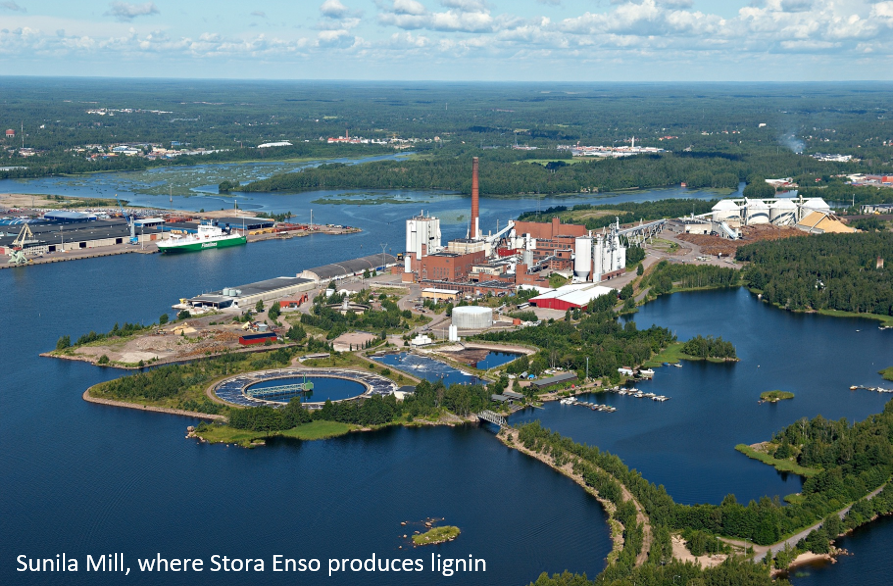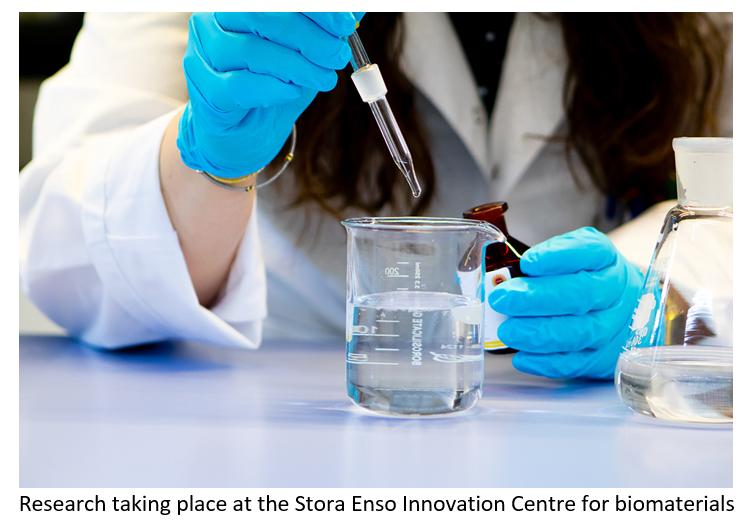Materials Science
Getting more from a tree to create new renewable solutions 4th July 2018
By Ingrid Peura, SVP Communications, Biomaterials and Biocomposites at Stora Enso Biomaterials Division
Ingrid Peura, SVP Communications, Biomaterials and Biocomposites at Stora Enso Biomaterials Division, explains how the compa

Ingrid Peura, SVP Communications, Biomaterials and Biocomposites at Stora Enso Biomaterials Division, explains how the company is developing new, innovative products and services from wood and other non-food competing feedstock.
The bioeconomy is growing, prompting companies to expand their biomaterials focus. Wood is an important raw material in this sector, along with other types of biomass, such as agricultural waste and other non-food-competing materials. As new technologies enable the more efficient extraction of hemicellulose, sugars, lignin and other previously unused components, the business potential for companies working in this space shows remarkable promise.
Developing bio-based solutions
One of the oldest companies in the world, Swedish-Finnish company Stora Enso has been transforming into a renewable materials company focusing on the packaging, biomaterials, wooden construction and paper sectors and continues to specialize its pulp business. The company is developing new, innovative products and services based on wood and other non-food competing feedstock.
Helping in this transition is the company’s Biomaterials Division, which was set up in 2012 to address resource scarcity and work on the technological development of bio-based chemical intermediates and by-products of the wood industry. The division is transforming non-food-competing, non-GMO, second-generation biomass into:
- Pulp product innovation for applications in tissues, hygiene, textile and non-woven materials, packaging and speciality fibres
- Regenerated cellulose and microfibrillated cellulose (MFC)
- Lignin
- Bio-based chemicals.
The company has also been developing the extraction technology platform to produce highly-refined sugars and lignin.

Furthermore, in 2014, Stora Enso acquired extraction and separation technology from the US biotechnology company Virdia to develop a new biorefinery concept. The technology, which will extract different fractions from wood and other biomass more efficiently, is being further developed in Stora Enso’s pilot plant in Danville, Virginia, USA.
Focus on lignin
One product platform the division has been focused on is lignin, traditionally discarded in the pulp production process. Normally, only around 50% of the tree is used – for its cellulose fibres – and lignin is usually discarded or burned for energy. Lignin is often seen as having numerous applications but limited business opportunities. However, as a bio-based future unfurls, so does the potential of this versatile raw material.
Stora Enso began commercializing dried Kraft lignin in 2013, having invested €32 million in new lignin separation technology at its Sunila mill in Finland. Lignin production began at Sunila in 2015 and the production capacity is 50,000 tonnes.
For bio-based products to impact the petro-based supply chain, they must have positive specifications. Lignin has many advantages over fossil-based equivalents such as phenol and formaldehyde, making it an ideal candidate for producing new materials and intermediates.
Phenol has a range of issues – but it is hazardous, volatile in price, difficult to handle and store. Phenol’s smell and toxicity also cause issues in manufacturing facilities. Lignin has a high functional versatility and is easier to handle compared with conventional raw materials. Lignin also has a carbon footprint up to 80% lower than phenol.
This year (2018), the company officially launched bio-based product Lineo as a renewable replacement for oil-based phenolic materials, which are used in resins for plywood, oriented strand board (OSB), laminated veneer lumber (LVL), paper lamination and insulation material. Lineo is a versatile, non-toxic raw material. Using lignin as a phenol replacement is already commercialized and Stora Enso is now researching how to use Lineo for other applications in the future, including carbon fibre, energy storage and the mechanical forest industry.
As a new product, it will take time to test lignin throughout the value chain, but it is hoped that brand owners will become increasingly aware of lignin’s potential as a sustainable and efficient product with a predictable cost structure.
The future is bio-based
It is clear that sustainable, renewable biomass offers a lot of opportunities. Identifying business opportunities in the renewable materials market and linking them with leading innovation and research centres in business and academia, will speed up delivery of commercial solutions to customers.
It is clear that sustainable, renewable biomass offers a lot of opportunities. Identifying business opportunities in the renewable materials market and linking them with leading innovation and research centres in business and academia, will speed up delivery of commercial solutions to customers.
Companies that invest now in new technologies and solutions will be able to extract more from wood and other non-food competing biomass, to create a range of high-performance, bio-based products. This could be a smart move for companies considering a renewable materials shift, as the world moves towards a more bio-based future.
Author:
Ingrid Peura, SVP Communications for Biomaterials and Biocomposites, Stora Enso Biomaterials Division, Kanavaranta 1, 00160 Helsinki, Finland
E: ingrid.peura@storaenso.com
http://biomaterials.storaenso.com
http://biomaterials.storaenso.com



